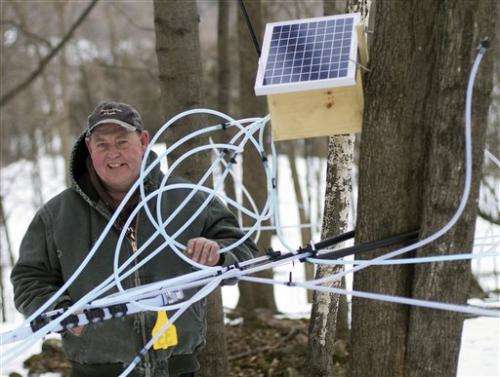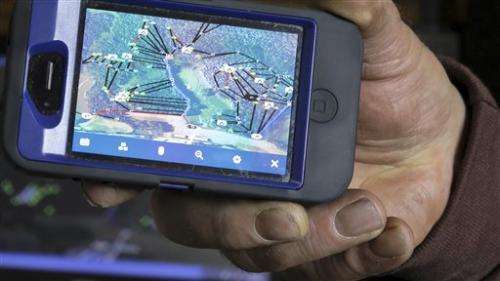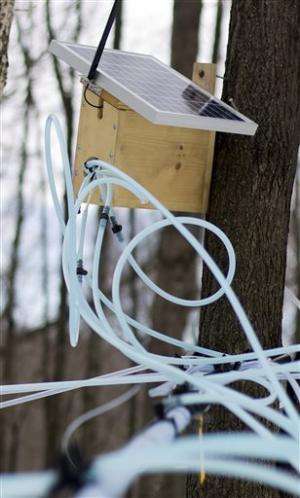In this photo taken Friday March 21, 2014, maple syrup producer Donnie Richards poses with sap lines on a maple tree and his wireless radio unit box containing sensors that monitor pressure on sap lines in Milton, Vt. Richards has about 5,000 taps, with about 18 miles of tubing spread out over more than 100 acres and uses the wireless sensors to monitor the flow of sap that provides information immediately on a smart phone of tablet computer. (AP Photo/Holly Ramer)
For years, vacuum tubing technology has allowed maple syrup producers to draw more sap from trees, but such systems are prone to leaks caused by falling branches or hungry critters chewing on lines.
Finding and repairing those leaks can take hours of trudging through often snow-packed woods. This season, however, some Vermont syrup producers are trying new wireless monitoring systems that allow them to keep track of their sap lines from the sugar house. They're using computers and smartphones to pinpoint the location of leaks, allowing them to make quick fixes and get better yields during the four-to six-week sugaring season.
In this photo taken Friday March 21, 2014, maple syrup producer Donnie Richards poses with his smart phone that shows his sap lines in Milton, Vt. Richards has about 5,000 taps, with about 18 miles of tubing spread out over more than 100 acres and uses wireless sensors to monitor the flow of sap. (AP Photo/Holly Ramer)
The inventor of one tracking system says it can net a 5 percent increase in production, the kind of jump that could only otherwise be expected by increasing manpower.
In this photo taken Friday March 21, 2014, one of maple syrup producer Donnie Richards wireless radio unit box containing sensors that monitor pressure on sap lines is seen in Milton, Vt. Richards has about 5,000 taps, with about 18 miles of tubing spread out over more than 100 acres and uses the wireless sensors to monitor the flow of sap that provides information immediately on a smart phone of tablet computer. (AP Photo/Holly Ramer)
© 2014 The Associated Press. All rights reserved.

























